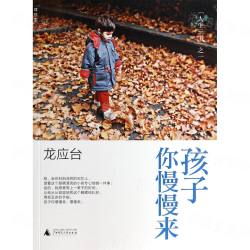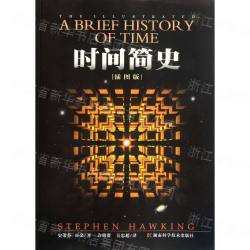-
内容大纲
伊久莫夫、库尔马耶夫编著的《铁砷化合物高温超导体(影印版)》研究了一类新的铁基高温超导体的物理特性和电子结构。无论其化学组分和晶体结构有何不同,这些化合物都表现出了相似的物理特性。这归因于铁砷层中的电子载体和这些载体与磁序的相互作用。对于这种材料的巨大兴趣源于对其应用前景的高度期待。本书提供了对这一材料的研究的完整图像,包括已有的理论模型和电子结构研究。
本书读者对象为本领域的研究者以及对材料科学感兴趣的研究生。 -
作者介绍
伊久莫夫(Y.Izyumov),俄罗斯科学院教授。 -
目录
1 Introduction
2 Compounds of the ReOFeAs Type
2.1 Crystallochemistry and Basic Physical Properties of Doped Compounds
2.1.1 Crystal Structure
2.1.2 Electron Doping
2.1.3 Hole Doping
2.1.4 Substitutions on the Fe Sublattice
2.1.5 Superconducting Transition Temperature
2.1.6 Critical Fields
2.1.7 Effect of Pressure on the Tc
2.2 Magnetic Properties
2.2.1 Magnetic Structure
2.2.2 Theoretical Explanation of Long-Range Magnetic Ordering in ReOFeAs
2.2.3 Phase Diagrams
2.2.4 Magnetic Fluctuations
2.3 Electronic Structure
2.3.1 Stoichiometric Compounds
2.3.2 The Role of Magnetic Ordering and Doping
2.3.3 Experimental Studies of the Fermi Surface
2.4 Symmetry of the Superconducting Order Parameter
2.4.1 Experimental Methods of Determining the Order Parameter
2.4.2 Nuclear Magnetic Resonance
2.4.3 Point-Contact Andreev Reflection
2.4.4 Tunnel and Photoemission Spectroscopies(STS, PES, ARPES)
3 Compounds of the AFeeAs2 (A = Ba,Sr, Ca) Type
3.1 Crystal and Electronic Structure
3.1.1 Crystal Structure
3.1.2 LDA Calculations of the Electronic Structure
3.1.3 Experimental Studies of the Fermi Surface
3.1.4 (Sr3Sc2Os)Fe2As2 and Other Similar Compounds
3.2 Superconductivity
3.2.1 Doping
3.2.2 Coexistence of Superconductivity and Magnetism
3.2.3 Effect of Pressure
3.2.4 Symmetry of the Superconducting Order Parameter
3.2.5 Measurements on the Josephson Contacts
3.2.6 Critical Fields
3.3 Magnetism
3.3.1 Stoichiometric Compounds
3.3.2 Doped Compounds
3.3.3 Magnetic Excitations
4 Other FeAs-Based Compounds
4.1 Compounds of the FeSe, FeTe Type
4.1.1 Superconducting Properties
4.1.2 Unusual Magnetic Properties
4.1.3 Electronic Structure of Stoichiometric Compounds
4.1.4 Electronic Structure of Doped Compounds
4.1.5 Magnetic Structure of FeTe
4.2 Compounds of the LiFeAs Type
4.2.1 Superconductivity
4.2.2 Electronic Structure
4.3 Compounds of the AFFeAs (A = St,Ca) Type
4.3.1 Primary Experimental Observations
4.3.2 Electronic Structure
5 Theory Models
5.1 General Properties of Compounds from Different Classes
of FeAs-Systems and Corresponding Theory Objectives
5.1.1 Crystal and Magnetic Structures
5.1.2 Peculiarities of the Electronic Structure
5.1.3 Asymmetry of the Electron/Hole Doping
5.1.4 Problems of Symmetry of the Superconducting Order Parameter
5.1.5 Isotopic Effect
5.2 Role of Electron Correlations
5.2.1 Dynamical Mean Field Theory (DMFT)
5.2.2 LDA+DMFT Calculation for ReOFeAs Compounds
5.2.3 LDA+DMFT Calculation on an Extended Basis
5.2.4 Comparison with Experiment
5.3 A Minimal Two-Orbital Model
5.3.1 Formulation of the Model
5.3.2 Band Structure of the Spectrum
5.3.3 Mean Field Approximation
5.3.4 Numerical Calculation for Small Clusters
5.4 Multi-Orbital Model
5.4.1 Formulation of the Model
5.4.2 Equations for a Superconductor in the Fluctuation Exchange (FLEX) Approximation
5.4.3 Properties of Superconductors with the s+ Symmetry of the Order Parameter
5.4.4 Three-Orbital Model
5.5 Detailed Analysis of the 5-Orbital Model
5.5.1 The Hamiltonian of the Model
5.5.2 Spin and Charge Susceptibility
5.5.3 Pairing of Electrons via Spin Fluctuations
5.5.4 Possible Symmetries of the Superconducting Order Parameter
5.6 Limit of Weak Coulomb Interaction
5.6.1 Renormalization Group Analysis
5.6.2 Equations for Superconducting and Magnetic Order Parameters
5.6.3 Phase Diagram of the Model
5.6.4 Peculiarities of the s~-Superconducting State
5.7 The Limit of Strong Coulomb Interaction
5.7.1 The t - J1 - J2-Model
5.7.2 Superconductivity with Different Order Parameters
5.7.3 Density of States and Differential Tunnel Conductivity
5.7.4 The Hubbard Model with the Hund's Exchange
5.8 Magnetic Long-Range Order and Its Fluctuations
5.8.1 Two Approaches to the Problem
5.8.2 The Itinerant Model
5.8.3 The Localized Model: Spin Waves
5.8.4 The Resonance Mode
5.8.5 Unified Models
5.8.6 FeAs-Compounds as Systems with Moderate Electron Correlations
5.9 Orbital Ordering
5.9.1 The Spin-Orbital Model
5.9.2 Phase Diagrams with Spin and Orbital Orderings
5.9.3 Spectrum of Magnetic Excitations
Conclusion
References
Index
同类热销排行榜
- 故宫日历(公历2017年)(精)26.4
- 时间简史(插图版)18
- 工程数学线性代数(第6版十二五普通高等教育本科国家级规划教材)7.76
- 昆虫记(精)/经典译林8.72
- 数控铣床综合实训教程19.2
- 昆虫记(插图典藏本)(精)11.2
- 化工制图习题集(普通高等教育规划教材)7.2
- 化工制图(普通高等教育规划教材)15.8
- 生命急救技能14
- 时间简史(普及版)(精)15.2
推荐书目
-

孩子你慢慢来/人生三书 华人世界率性犀利的一枝笔,龙应台独家授权《孩子你慢慢来》20周年经典新版。她的《...
-

时间简史(插图版) 相对论、黑洞、弯曲空间……这些词给我们的感觉是艰深、晦涩、难以理解而且与我们的...
-

本质(精) 改革开放40年,恰如一部四部曲的年代大戏。技术突变、产品迭代、产业升级、资本对接...

 [
[
